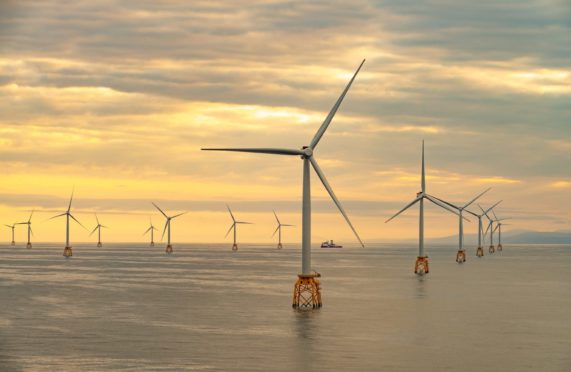Sir, – Could mankind be any more destructive in its vain attempts to “save the planet”?
Ever more alarming articles inform us about climate change causing an “increase in number of seabirds washing up dead” (Press and Journal, September 3).
At the same time, we are carpeting almost the entire country, plus much of our pristine seascapes with what has been described as the new “apex predator” – hugely destructive, lethal, industrial wind turbines.
The Isle of Man wildlife charity Manx Birdlife has reported a shocking 40% decline in the populations of many species of sea birds around the island’s coast as wind farms overwhelm the Irish Sea.
Herring gulls are down 82%, European shags down 51%, razorbills down 55%. The list goes on, yet barely a mention is made by any environmental body supposed to be protecting our wildlife. They shrug their collective shoulders telling us that cats kill more birds, so presumably we may as well accelerate the slaughter!
What sort of perverted environmental logic is that?
The RSPB has tracked more than 1,000 of Britain’s four most threatened bird species – kittiwakes, guillemots, razorbills and shags – and found they feed at certain “hot spots”. Many of these are sandbanks where small fish are found – which happen to be the places ruthless developers find it easier to build offshore wind turbines.
The RSPB vehemently objected to the Firth of Forth offshore wind farms, describing them as “the most damaging wind farms for seabirds anywhere in the world”, adding the proliferation of offshore wind farms could be the “final nail in the coffin” for sea birds.
Yet our blinkered politicians blunder on regardless, few willing to admit that we have got this unnecessary, indiscriminate slaughter of wildlife horribly wrong!
George Herraghty, Lhanbryde, Elgin, Moray.
Soy feeds fuelling global warming
Sir, – Having recently discovered the link between deforestation and much of the meat sold in some supermarkets, I’ve decided to greatly reduce the amount of meat and chicken that I eat to try to preserve what little rainforest we have left. Cutting down on my meat intake does not come easy, as I was brought up on an Aberdeenshire farm and enjoy the flavour and texture.
However, the news of forest fires destroying the Amazon rain forest and other forests last summer has shocked me into action. Across Brazil, land is being slashed and burned to make space to grow soy and farm livestock. I was surprised that a large amount of chicken produced here in the UK is fed on soy grown on deforested land in Brazil. This year’s fires are already breaking monthly records.
Not only does destroying forests release lots of carbon into the atmosphere, contributing to climate change, but farming animals produces even more greenhouse gases.
Much of the land being destroyed is home to indigenous peoples whose right to existence is threatened.
Some of the supermarkets are starting to insist that their suppliers must phase out soy-fed premium meat, local butchers are more likely to buy locally reared animals fed mainly on grass, silage and barley, but I will be asking them in future before I buy.
Some supermarkets, such as Tesco, continue to have soy-fed meat and chicken on their shelves. However all supermarkets and fast food chains need to increase their sales of plant-based products and reduce the amount of industrial meat they sell, to do their bit to help keep global temperature rise within 1.5 degrees and to protect our beautiful, biodiverse rain forests for people, nature and wildlife now and in the future.
John Johnston, Fintray, Aberdeenshire.
SNP’s raison d’être is independence
Sir, – Keith Fernie’s letter “Obsession with independence” (Press and Journal, September 3) highlights his obsession of purporting to speak for a “disgusted public”.
He fails to acknowledge the fact independence is the raison d’être of the Scottish National Party and they now have the mandate to implement their manifesto policies. The Scottish Green Party have the same policy for independence in their manifesto.
I find it refreshing that the proportional representation system used in Scotland permits smaller political parties to be democratically represented and given the opportunity to implement policies. The UK stands alone in Europe with their FPTP voting system. More than 40 countries in the European area use some form of proportional representation.
I would recommend to Mr Fernie the TED Talk given by Nicola Sturgeon which has been acclaimed as one of the most inspirational of political lectures.
John Massie, Turfhill Court, New Deer.
